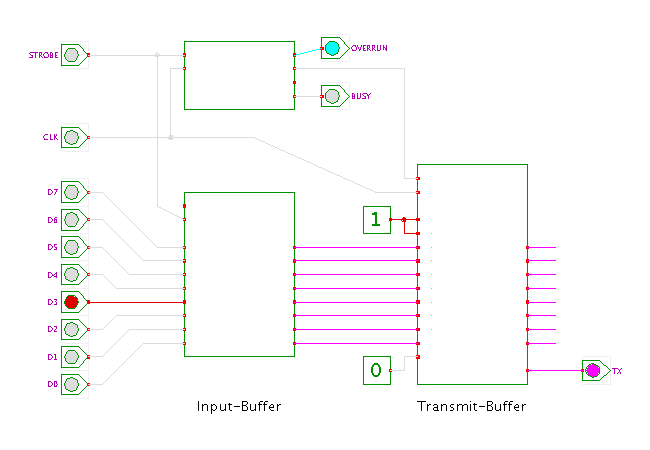

 |  |
 Description
This circuit shows an example implementation of a
parallel-to-serial converter for RS-232 protocol communication.
See the
previous applet
for the in-system demonstration of the transmitter.
Description
This circuit shows an example implementation of a
parallel-to-serial converter for RS-232 protocol communication.
See the
previous applet
for the in-system demonstration of the transmitter.
We expect the input data via the eight data input ports. A rising-edge on the strobe input signals that the input data is valid and should be transmitted. To avoid blocking the data generator during a transmission, a separate input-buffer register is provided. As the clock input of this register is directly connected to the strobe input, the buffer-register will be loaded on the rising-edge of the strobe signal. The strobe signal also triggers the controller block, which coordinates the transmission.
The shift-register block consists of a parallel-load serial-out shift-register with a few extra stages to automatically generate the start- and stop-bits required by the RS-232 protocol. The output from the shift-register is directly used as the RS-232 data. Obviously, the frequency of the clock signal must be chosen to match the expected baud-rate of the RS-232 channel.
The busy signal indicates an on-going transmission. To avoid overwriting data in the input-buffer, no strobe signal must be given during a transmission. The overrun signal is provided to signal such error, but it is not implemented yet.
Run the applet | Run the editor (via Webstart)